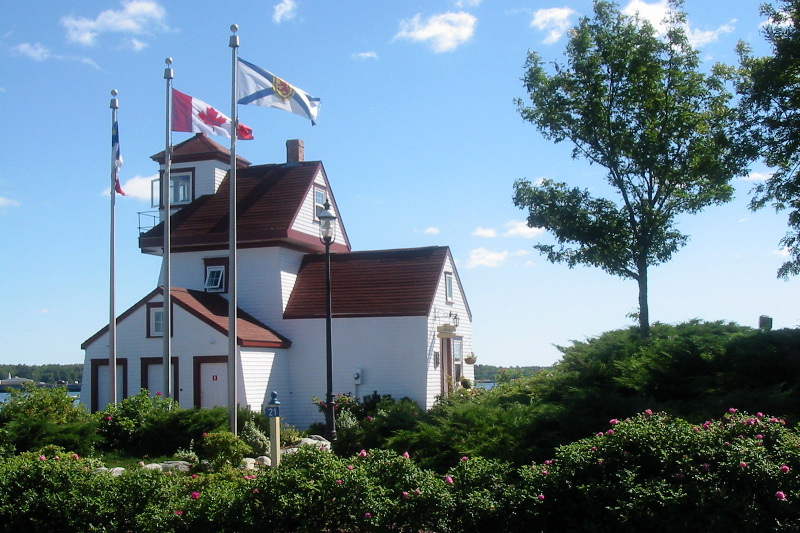Liverpool is perhaps one of the most interesting towns in all of Nova Scotia, and one often overlooked by tourists; every time I go there I think “this would be a cool place to retire.” dP and I had clam chowder in a small restaurant in town the last time we were in Nova Scotia and I have to say it was perhaps some of the best chowder I have ever had (the best comes from a small seaside restaurant in Victoria, B.C.).
Liverpool has a cool history as it was once a pirate privateer town. Privateers were privately owned warships licensed by governments to attack enemy ships in wartime. Their crews and owners were paid by shares of the enemy vessels and cargoes they captured. So, in essence they were legalized pirates though I’m sure there are many heated debates over the difference between the two.
The Canada Parks sign on the waterfront has details on Liverpool’s privateering activities. Here is a simplified and extremely shortened version of the history:
Liverpool emerged during the Napoleonic Wars as the privateering capital of British North America, deploying more privateer vessels than Halifax, a community ten times as large. From the American Revolution in 1778 to the end of the War of 1812, about 30 privateer vessels set forth from Liverpool. Wars brought great hardship to Liverpool, destroying its busy trade with the West Indies and New England as well as disrupting the lucrative fishery. Privateering provided compensation for the merchants and seamen of the port, and the locally commanded fleet of small warships gave a measure of security.
Ordinary sailors did not get rich from privateering, although they earned in prize money two to three times more than normal wages. They also confronted great danger from naval press gangs – capture or death. One Liverpool privateer schooner, the Rolla, was lost with all 42 of her crew in a storm off Cape Cod in 1815 instantly creating 22 widows and a hundred orphans in Liverpool.
We went down to Fort Point and the Lighthouse to have coffee, a snack, and to watch the birds and the Mersey River. This town is well known to my dad because he was born in Liverpool and also spent many childhood years in this area.
The red and white building in the photo below (not the lighthouse above but the one behind the canon) used to be the weather office where my grandfather worked for many years. Both my dad and his brother Ern used to come to work with granddad and spend the day on the rocks catching fish using periwinkles for bait.
